Our universe is a vast and mysterious place, filled with countless celestial bodies that continue to astound and captivate us. In recent times, astronomers have made remarkable discoveries beyond our solar system – exoplanets, or planets that orbit stars outside of our own sun. But did you know that these distant exoplanets might also have moons of their own? These fascinating exomoons have become the subject of great intrigue, as they hold the potential to shed light on the formation of planetary systems and even support the existence of life. Join us on an enlightening journey as we delve into the realm of exomoons and explore their significance in the grand tapestry of our universe.
Contents
- Understanding Exomoons
- Discovering Exomoons
- Significance of Exomoons
- Implications for Astronomy and Astrobiology
- Challenges and Limitations
- Conclusion
-
Frequently Asked Questions
- 1. How do scientists detect exomoons?
- 2. Can exomoons support life?
- 3. Have any exomoons been discovered so far?
- 4. How do exomoons affect their exoplanets?
- 5. Could exomoons have their own moons?
- 6. What role do exomoons play in the formation of planetary systems?
- 7. Can exomoons have their own atmospheres?
- 8. Why are exomoons important in the search for extraterrestrial life?
- 9. What challenges do scientists face in detecting exomoons?
- 10. How do exomoons differ from moons in our solar system?
- References
-
Frequently Asked Questions
- FAQs about Exomoons
- 1. How are exomoons different from exoplanets?
- 2. Can exomoons support life?
- 3. How do scientists detect exomoons?
- 4. What are the challenges in detecting exomoons?
- 5. What implications do exomoons have for astronomy?
- 6. Are there any notable exomoon discoveries?
- 7. How do exomoons influence exoplanet habitability?
- 8. What role do exomoons play in the search for extraterrestrial life?
- 9. How do exomoons contribute to our understanding of exoplanet formation?
- 10. Can exomoons exist in binary star systems?
- References
- Read More
Understanding Exomoons
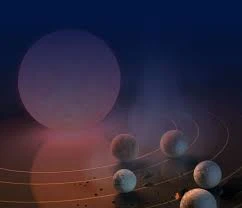
Exomoons, as the name suggests, are moons that exist outside of our own solar system. These elusive celestial bodies revolve around exoplanets, similar to how Earth’s moon orbits our planet. However, exomoons present unique characteristics and complexities that set them apart from their interstellar counterparts.
Exomoons are defined as natural satellites that orbit exoplanets. Just like moons in our solar system, exomoons do not emit light of their own but instead reflect the light of their host star. These moons can come in various sizes, ranging from small rocky bodies to larger, gas-enveloped ones. The presence of an exomoon can greatly impact the dynamics of its parent exoplanet, influencing its orbit, tidal forces, and even its habitability.
Exomoons possess a wide array of characteristics, making them a fascinating subject of study for astronomers and astrobiologists alike. Some of these key characteristics include:
- Size and Composition: Exomoons can range in size from smaller than Earth’s moon to larger than Neptune, and their composition can vary widely as well. Some may have rocky surfaces, while others could be icy or gaseous in nature.
- Orbital Dynamics: Exomoons orbit their parent exoplanets, but their orbits can be influenced by nearby planets or other celestial bodies. This complexity contributes to the intricate dance of gravitational forces within exosolar systems.
- Potential Atmospheres: Depending on their size and composition, exomoons may have atmospheres of their own. These atmospheres could play a role in the moon’s habitability and potential for supporting lifeforms.
- Tidal Interactions: The gravitational forces between an exoplanet and its moon can lead to tidal interactions. These interactions can result in tidal heating, which may create conditions suitable for the existence of liquid water and the possibility of habitable environments.
Understanding these characteristics is crucial in unraveling the mysteries of exomoons and their significance in the broader context of our universe.
1.1 Definition of Exomoons
The definition of exomoons can provide us with a deeper understanding of these intriguing celestial objects. Exomoons, also known as extrasolar moons, are moons that orbit planets outside of our own solar system. They are counterparts to the moons in our solar system, such as Earth’s moon or the Galilean moons of Jupiter. However, exomoons have the unique distinction of belonging to exoplanets, which are planets that exist beyond our sun. Just as our moon orbits Earth, exomoons revolve around their host exoplanets. The discovery and study of exomoons have opened up new avenues for research, expanding our knowledge of planetary systems and their dynamics. By studying exomoons, scientists hope to unravel the mysteries of their formation, composition, and their role in the overall habitability of exoplanets. This understanding can provide valuable insights into the broader field of astronomy and contribute to the search for life beyond our solar system. With ongoing advancements in technology and observational techniques, the exploration of exomoons continues to fascinate and inspire scientists and enthusiasts alike.
1.2 Characteristics of Exomoons
When it comes to the characteristics of exomoons, there is a wide range of factors to consider that contribute to their uniqueness and scientific significance. Let’s dive deeper into some of the key characteristics:
- Size and Composition: Exomoons can vary greatly in size, ranging from small, rocky bodies similar to our moon to larger, gas-enveloped moons. Their composition can also be diverse, with some exomoons having rocky surfaces, while others might be comprised of icy or gaseous materials.
- Orbital Dynamics: The orbital dynamics of exomoons are influenced by multiple factors, such as their distance from the host planet, the presence of other celestial bodies, and the gravitational forces at play. These dynamics can result in complex orbits and interactions within exosolar systems.
- Atmospheres: Depending on their size, exomoons may possess their own atmospheres. The nature and composition of these atmospheres can greatly impact the moon’s climate, potential for retaining heat, and the presence of elements necessary for life.
- Tidal Forces: Tidal forces play a crucial role in the characteristics of exomoons. The gravitational interaction between the moon and its parent planet, as well as any nearby celestial bodies, can lead to tidal heating. This tidal heating can generate internal energy, potentially creating subsurface oceans and geothermal activity, which may be conducive to supporting life.
- Potential Habitability: Some exomoons have characteristics that suggest they could be potentially habitable. Factors such as the presence of liquid water, a stable environment, and the right combination of atmospheric and geological conditions can contribute to the habitability of these moons. The study of exomoons gives us clues about the potential for life beyond Earth.
Understanding these unique characteristics of exomoons allows scientists to infer their potential habitability and study their impact on their parent exoplanet’s overall system. By further investigating the intricacies of exomoons, astronomers can gain valuable insights into the formation of planetary systems and the conditions necessary for life in the universe.
Discovering Exomoons
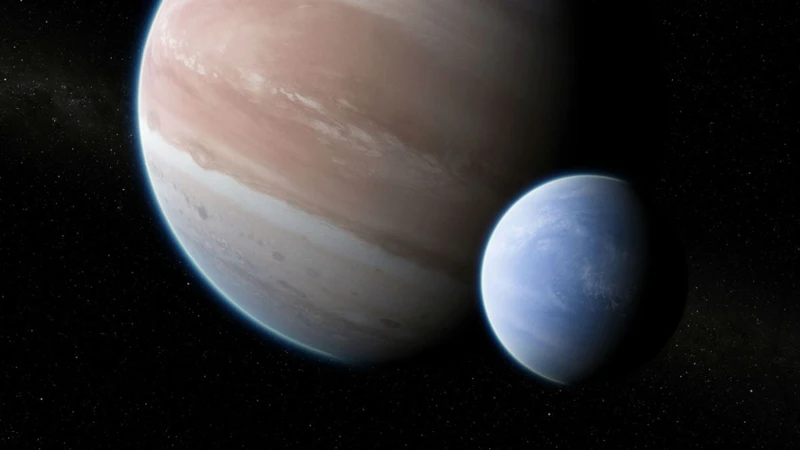
Discovering exomoons in the vast expanse of space is no easy task and requires innovative techniques and advanced technology. Astronomers employ various methods to detect these elusive moons and gather valuable information about their existence and characteristics.
| Methods for Detecting Exomoons | Notable Exomoon Discoveries |
|---|---|
| Transit Timing Variation (TTV): This method observes the timing variations in the transit of an exoplanet as it orbits its host star. These variations could indicate the gravitational influence of an exomoon, pulling on the planet and causing deviations in its transit timing. | Kepler-1625b I: This exomoon discovery made headlines when astronomers detected a moon orbiting the exoplanet Kepler-1625b. This finding provided compelling evidence for the existence of exomoons and opened up new possibilities for further exploration. |
| Transit Duration Variation (TDV): By monitoring changes in the duration of an exoplanet’s transit, scientists can infer the presence of an exomoon. The gravitational interaction between the planet and its moon can alter the duration of the transit event. | WASP-49b: In 2017, the exomoon candidacy around the exoplanet WASP-49b was proposed. This potential exomoon discovery generated excitement in the scientific community, highlighting the ongoing search for these celestial companions. |
| Direct Imaging: Directly capturing the image of an exomoon is incredibly challenging due to their small size and the glare from the host star. However, future advancements in telescopes and technology may enable astronomers to directly image exomoons in the coming years. | HD 100546 b: This exoplanet was observed with the Atacama Large Millimeter/submillimeter Array (ALMA), revealing a potential exomoon candidate based on the data. This discovery emphasized the need for further observations and analysis to confirm its existence. |
These methods provide valuable tools for detecting exomoons, but the process is still in its infancy. Further advancements in technology and future space missions will undoubtedly bring us closer to unlocking the secrets of exomoons and their place in the cosmos.
2.1 Methods for Detecting Exomoons
Detecting exomoons poses a significant challenge for astronomers due to their relatively smaller size and dimmer light compared to exoplanets. Nevertheless, several methods have been developed to aid in the discovery of these elusive celestial bodies.
Transit Timing Variations (TTV): One of the primary methods for detecting exomoons is through the observation of transit timing variations. In this technique, astronomers analyze the slight deviations in the timing and duration of exoplanet transits caused by the gravitational pull of an exomoon. These variations can reveal the presence of a moon orbiting the exoplanet.
Transit Duration Variations (TDV): TDV is another technique employed to detect exomoons. Researchers study the changes in the duration of exoplanet transits, which can occur due to the gravitational interactions between the exoplanet, its moon, and other planets in the system. These variations in transit duration can indicate the presence of an exomoon.
Direct Imaging: Direct imaging is a challenging but powerful method used to detect exomoons. By capturing direct images of the exoplanet and its moon, astronomers can identify the presence of an exomoon based on its distinctive light signature. This method requires advanced telescopes and high-contrast imaging techniques to overcome the overwhelming brightness of the host star.
Gravitational Microlensing: Gravitational microlensing occurs when the gravity of a massive object, such as an exoplanet or exomoon, magnifies the light of a more distant star. By observing changes in the brightness of the background star caused by the gravitational lensing effect, scientists can infer the presence of an exomoon.
Additional Methods and Technologies: Other techniques, such as analyzing stellar radial velocity variations and studying the effects of exomoons on exoplanet habitability zones, are also under exploration for exomoon detection. Advancements in technology and future missions, such as the James Webb Space Telescope, will enhance our ability to detect exomoons and unravel the secrets they hold.
While the discovery and detection of exomoons remain challenging endeavors, continued efforts and advancements in technology are expanding our knowledge of these intriguing celestial companions.
2.2 Notable Exomoon Discoveries
Notable exomoon discoveries have opened up new frontiers in our understanding of the universe and the diversity of planetary systems. While exomoons are challenging to detect and confirm, scientists have made significant progress in identifying potential moons in exosolar systems.
One notable exomoon discovery occurred in 2017 when astronomers observed data from the Kepler Space Telescope. They noticed a series of intriguing transit signals around the exoplanet Kepler-1625b, suggesting the presence of a sizable accompanying moon. This potential exomoon, unofficially called Kepler-1625b I, would have been roughly the size of Neptune and marked a groundbreaking moment in exomoon research. However, further observations and studies are still ongoing to confirm its existence conclusively.
Another exciting exomoon candidate made headlines in 2018 when researchers analyzed data from the Hubble Space Telescope. The exoplanet candidate, known as Kepler-1625b, exhibited irregular transit signals that hinted at the presence of an accompanying moon. This tantalizing discovery ignited intense scientific debate and the search for additional evidence to validate the findings.
While these notable exomoon discoveries represent important milestones, it is essential to approach each candidate with scientific rigor and remain cautious until further evidence can confirm their existence. Nonetheless, these discoveries serve as reminders of the vast diversity of planetary systems and the potential for moons to exist around exoplanets. They fuel our curiosity and inspire ongoing research aimed at uncovering the secrets of exomoons and their role in shaping the universe.
Significance of Exomoons
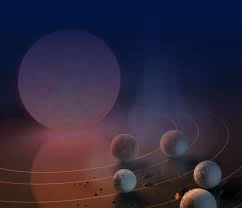
The discovery and study of exomoons hold immense significance in expanding our understanding of the universe and the potential for life beyond our own planet. These enigmatic celestial bodies offer unique insights into the formation and dynamics of exosolar systems, as well as their habitability and potential to support life.
1. Influence on Exoplanet Habitability: Exomoons can play a crucial role in determining the habitability of their parent exoplanets. Their gravitational interactions with the planet can stabilize the planet’s axial tilt and regulate its climate, similar to how Earth’s moon stabilizes our planet’s tilt. This stability can be pivotal in creating a conducive environment for life to emerge and thrive.
2. Potential for Supporting Life: Exomoons themselves have the potential to support life. Just like exoplanets, they can possess environments suitable for the existence of liquid water and the development of complex ecosystems. The presence of an exomoon could provide additional stability to the exoplanet’s climate, enhancing the conditions for habitability.
3. Exploring Different Habitability Zones: Exomoons can expand the range of habitability zones within exosolar systems. While an exoplanet may be located outside the habitable zone of its star, the presence of a moon could introduce tidal heating, which can create a habitable environment even in seemingly inhospitable regions. This widens the scope of where organisms may potentially survive and thrive.
4. Understanding Exoplanet Formation: Exomoons serve as indicators of the intricate processes involved in the formation of exoplanetary systems. Their existence and characteristics provide valuable insights into the dynamics of planetary accretion and migration, shedding light on the mechanisms by which exoplanets and their moons come into existence.
The significance of exomoons cannot be overstated. They hold the potential to reshape our understanding of the formation and habitability of exosolar systems. As we continue to explore the cosmos, exomoons will continue to be a focal point of research and investigation, propelling us closer to unraveling the mysteries of the universe and the possibility of finding life beyond Earth.
3.1 Influence on Exoplanet Habitability
Exomoons play a crucial role in influencing the habitability of their parent exoplanets. The presence of a moon can have significant implications for the conditions and stability of the planet’s environment. Here are some ways in which exomoons can shape the habitability of exoplanets:
1. Tidal Forces and Stabilizing Orbits: Exomoons can help stabilize the axial tilt of their parent exoplanets, resulting in more stable climate patterns. This stabilization helps to prevent extreme temperature variations, which are vital for supporting life as we know it. The gravitational interactions between the exoplanet and its moon create tidal forces that help maintain a stable and habitable environment.
2. Tidal Heating and Geothermal Activity: The tidal forces exerted by an exomoon on its parent exoplanet can lead to tidal heating. This heating can generate internal energy within the planet, facilitating geothermal activity such as volcanic eruptions and tectonic activity. Geothermal activity can be beneficial for habitability as it provides a source of heat, nutrients, and energy that can support the development and sustenance of life.
3. Atmospheric Regulation: Exomoons can also influence the atmosphere of their parent exoplanets. The gravitational interactions between the moon and the exoplanet can cause atmospheric circulation patterns, which can help regulate the distribution of heat and maintain a stable climate. This, in turn, can contribute to the preservation of liquid water on the planet’s surface, a crucial ingredient for life as we know it.
4. Habitat for Life: Exomoons themselves have the potential to be habitable environments. If an exomoon possesses the right conditions, such as a hospitable atmosphere and the presence of liquid water, it could serve as a potential habitat for life. Just like exoplanets, exomoons could harbor microbial life or even more complex organisms.
Understanding the influence of exomoons on exoplanet habitability allows us to expand our understanding of what conditions might be necessary for the development and sustainability of life in the universe. By studying the complex interactions between exomoons and exoplanets, scientists can gain insights into the factors that contribute to a planet’s potential to host life.
Please don’t forget to take a look at our article on the science behind the formation of constellations to learn more about the vast wonders of the universe!
3.2 Potential for Supporting Life
One of the most intriguing aspects of exomoons is their potential for supporting life. While the discovery of life beyond Earth remains a profound challenge, the existence of exomoons offers tantalizing prospects. These celestial bodies may possess conditions that could harbor and sustain life as we know it. Here are some of the factors that contribute to the potential habitability of exomoons:
1. Stable Orbit: A crucial aspect for the potential habitability of an exomoon is its stable orbit around its parent exoplanet. A stable orbit ensures a stable climate, reducing extreme temperature fluctuations that could hinder the development or survival of lifeforms.
2. Tidal Heating: Tidal interactions between an exomoon and its host exoplanet can generate a significant amount of heat. This tidal heating can result in subsurface oceans, which could provide the necessary liquid water for life to thrive. The presence of liquid water, along with essential chemical components and energy sources, are fundamental requirements for life as we understand it.
3. Atmospheric Conditions: Exomoons with atmospheres may play a critical role in supporting life. An atmosphere can regulate temperature, provide protection from harmful radiation, and facilitate vital chemical processes. Some exomoons may possess atmospheres that contain the right combination of gases, including oxygen and other potentially life-sustaining elements.
4. Stability over Time: The long-term stability of an exomoon’s environment is essential for the development and sustainability of life. Factors such as the long-term stability of the exoplanet-moon system, the presence of a protective magnetosphere, and the avoidance of extreme events such as strong tidal disruptions or impacts from comets or asteroids contribute to the potential habitability of exomoons.
While the potential for supporting life on exomoons is theoretical at this stage, the exploration and study of these celestial bodies open up new possibilities and avenues for further research. Understanding the conditions necessary for the existence of life on exomoons expands our knowledge of habitable environments in the cosmos and raises exciting prospects for the search for extraterrestrial life.
Implications for Astronomy and Astrobiology
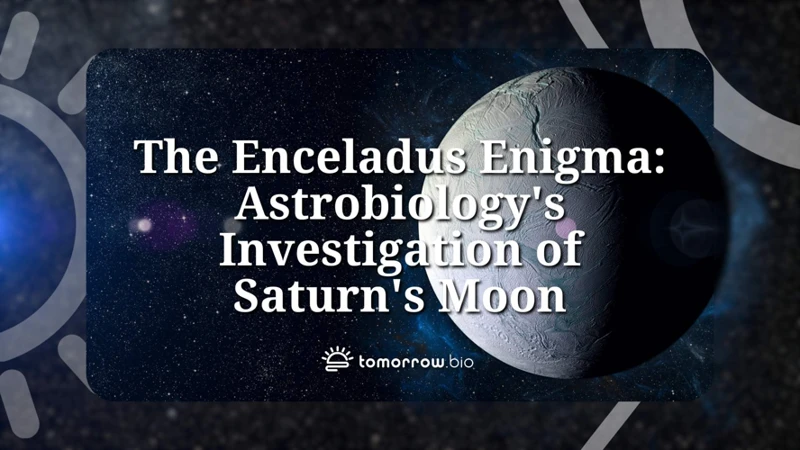
The discovery and study of exomoons have significant implications for both astronomy and astrobiology. These enigmatic celestial bodies provide valuable insight into the formation and evolution of exoplanetary systems, giving astronomers a deeper understanding of the processes involved in planetary formation. Exomoons may hold the key to the search for extraterrestrial life.
Here are some of the key implications of exomoons for astronomy and astrobiology:
1. Exomoons as Indicators of Exoplanet Formation: By studying exomoons and their interactions with their parent exoplanets, scientists can gain insights into the mechanisms of exoplanet formation. Factors such as the size, composition, and orbital dynamics of exomoons provide clues about the conditions present during the early stages of planetary system development. This knowledge helps refine current models and theories of planet formation.
2. Role in the Search for Extraterrestrial Life: Exomoons present exciting possibilities regarding the potential for habitability and the existence of life beyond Earth. Moons offer advantages such as tidal heating due to gravitational interactions, which can generate geothermal energy and potentially create suitable environments for the emergence and sustenance of life. The study of exomoons provides a new avenue for astrobiologists to identify potentially habitable worlds.
3. Understanding Planetary Habitability: Exomoons contribute to our understanding of planetary habitability by influencing the stability of an exoplanet’s climate and its chances of retaining a substantial atmosphere. The gravitational interactions between exomoons and exoplanets can stabilize an orbit, minimize eccentricity, and regulate the planet’s climate over geological timescales. These factors are crucial for the persistence of stable conditions necessary for life to emerge and thrive.
4. Diversity of Planetary Systems: The presence of exomoons in exoplanetary systems adds to the growing realization of the diversity and complexity of planetary systems beyond our own. Studying exomoons provides valuable data that aids in the classification and categorization of different types of exoplanets and their accompanying moons.
The implications of exomoons expand our knowledge of the cosmos and open up new avenues for scientific exploration and discovery. As technology continues to advance, astronomers and astrobiologists have a unique opportunity to unlock the secrets of these distant celestial bodies and further our understanding of the universe.
4.1 Exomoons as Indicators of Exoplanet Formation
Exomoons not only offer insights into their own unique properties but also serve as valuable indicators of exoplanet formation. The presence of exomoons within exosolar systems provides clues about the formation and evolution of exoplanets themselves.
1. Dynamical Stability: The existence of exomoons suggests that the exoplanetary systems have achieved a level of dynamical stability. The gravitational interactions between the exoplanet and its moon must be finely balanced to prevent the moon from being ejected or colliding with the planet. This stability hints at the complex processes that govern the formation and evolution of exoplanetary systems.
2. Protomoon Hypothesis: The formation of exomoons can shed light on the protomoon hypothesis, which proposes that moons are formed within a circumplanetary disk surrounding a young exoplanet. By studying exomoons, scientists can gain insights into the mechanisms by which these moons form from the accretion of material within the protoplanetary disk. This knowledge expands our understanding of planetary formation theories and provides valuable data points for future studies.
3. Migration and Capture: The presence of exomoons can also indicate the migration and capture processes that occur within exosolar systems. Moons can be captured from elsewhere in the system or even from neighboring star systems. These capture events can alter the dynamics of the exoplanet and provide evidence of past interactions between multiple celestial bodies.
4. Transit Timing Variations: The study of exomoons can also reveal transit timing variations (TTVs), which are changes in the timing of a planet’s transit caused by gravitational interactions with its moon. By observing these variations, astronomers can infer the presence and properties of exomoons that might otherwise be difficult to detect directly. TTVs provide valuable data for determining the mass, orbit, and other key parameters of both the exomoon and its host planet.
Understanding the role of exomoons in exoplanet formation not only enhances our knowledge of planetary systems but also contributes to the ongoing search for habitable environments and the potential for extraterrestrial life. By studying their formation and evolution, scientists gain valuable insights into the complex processes that shape the vast expanse of our universe.
4.2 Role in the Search for Extraterrestrial Life
Exomoons play a vital role in the ongoing search for extraterrestrial life in the universe. As we explore the possibilities of life beyond Earth, the presence of exomoons adds another layer of potential habitability and complexity to consider.
One key aspect of exomoons is their potential to provide stable environments that could house life. The gravitational interactions between an exoplanet and its moon can create tidal heating, generating internal heat that could sustain liquid water oceans beneath the moon’s surface. These subsurface oceans, similar to those found on Jupiter’s moon Europa or Saturn’s moon Enceladus in our own solar system, could potentially harbor lifeforms. The presence of exomoons in habitable zones around their host exoplanets increases the chances of finding celestial bodies with the necessary conditions to support life as we know it.
Additionally, exomoons can affect the habitability of exoplanets themselves. The gravitational interactions between the exoplanet and its moon can stabilize the planet’s axial tilt, regulating its climate and preventing extreme seasonal variations. This stability creates a more hospitable environment for potential life to thrive.
Exomoons could act as indicators of potential habitable environments. In our solar system, moons like Titan and Enceladus have been found to contain organic molecules and subsurface water, hinting at the possibility of life-supporting conditions. By studying exomoons and their composition, scientists can gain insights into the likelihood of habitability on their parent exoplanets. This knowledge can guide future missions and observations, increasing the chances of discovering environments that could support extraterrestrial life.
However, the search for exomoons and their role in the search for extraterrestrial life is not without its challenges. Detecting exomoons requires precise observations and sophisticated techniques, often relying on methods such as transit timing variations or gravitational microlensing. Accurately interpreting the data and distinguishing exomoons from other celestial objects can be complex, requiring careful analysis by scientists.
Exomoons provide new opportunities in the quest for extraterrestrial life. Their potential to support habitable environments and influence the habitability of their exoplanets makes them intriguing targets for future exploration and research. By studying exomoons, we inch closer to unraveling the mysteries of life in the universe and understanding our place within it.
Challenges and Limitations
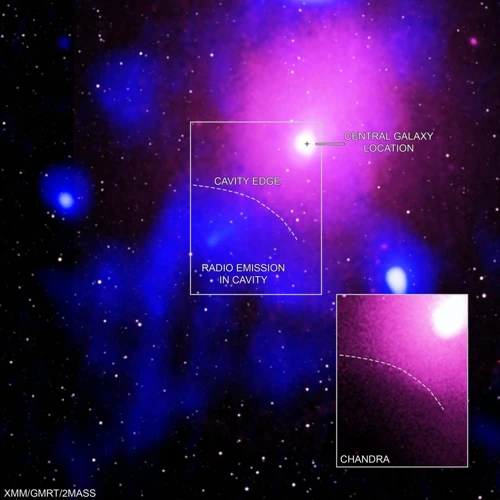
While the study of exomoons holds great promise, it is not without its challenges and limitations. Detecting and studying these distant moons present numerous obstacles that astronomers must overcome to further our understanding.
Detection Challenges and Technical Obstacles: One of the primary challenges in studying exomoons is the ability to detect them in the first place. The indirect methods used to find exoplanets, such as the transit or radial velocity method, are even more difficult to apply when searching for exomoons. The presence of a moon can impact the observed characteristics of the exoplanet, making it challenging to disentangle the effects of the moon from those of the planet itself. Additionally, the signals from exomoons can be much weaker than those from exoplanets, further complicating their detection.
Interpretation of Data and Exomoon Characteristics: Another limitation is the difficulty in interpreting the data obtained from exomoon detections. The available data may not provide a clear picture of the moon’s size, composition, or orbital dynamics. The limited information can make it challenging to draw definitive conclusions about the exomoon’s properties and its potential implications.
The rarity of confirmed exomoon discoveries adds to the limitations. As of now, only a few potential exomoon candidates have been identified. This limited sample size makes it difficult to generalize findings or draw broad conclusions about the nature and diversity of exomoons.
Incorporating and refining Models: Additionally, the study of exomoons requires sophisticated models and simulations to understand their formation and evolution. Incorporating the complex dynamics of multiple bodies within an exosolar system adds further complexity to these models. As scientists continue to refine these models, new insights may emerge, but it remains an ongoing challenge.
While these challenges and limitations exist, the field of exomoon research is rapidly evolving. Advancements in technology, such as the launch of advanced space telescopes and improved detection methods, may help overcome current obstacles and pave the way for exciting discoveries in the future.
Note: If you are interested in capturing the beauty of meteor showers, you can check out our article on tips for photographing meteor showers.
5.1 Detection Challenges and Technical Obstacles
Detecting exomoons poses significant challenges and technical obstacles that astronomers must overcome in order to confirm their existence. Due to their small size and proximity to exoplanets, exomoons can be incredibly difficult to detect directly. This is primarily because the light emitted or reflected by the exomoon is often overshadowed by the brightness of the host star. Additionally, exomoons may be obscured by the light of their parent planet, further complicating their detection.
One of the methods used to detect exomoons is the transit method, which involves observing the slight dimming of a star’s brightness as an exoplanet passes in front of it. However, detecting an exomoon using this method is even more challenging. The minute changes in brightness caused by an exomoon can easily be masked by the larger transit signal from its parent planet, making it difficult to distinguish between the two.
Another approach is the timing method, which looks for variations in the timing of an exoplanet’s transit caused by the gravitational pull of an exomoon. However, precise and accurate measurements of these timing variations are required, which can be technically demanding and require advanced observational equipment.
The presence of multiple exoplanets within a system can create complex orbital dynamics that make it challenging to identify the presence of an exomoon. The interactions between the exomoon, exoplanet, and other bodies can cause irregularities in the transit timing or shape, making it difficult to interpret the data and confidently confirm the existence of an exomoon.
Despite these challenges, advancements in technology and observational techniques continue to improve the prospects for detecting exomoons. Future missions and space telescopes, such as the James Webb Space Telescope, hold promise for unraveling the mysteries surrounding these elusive celestial objects. Expanding our understanding of detection methods and developing innovative techniques will be crucial in overcoming the detection challenges and technical obstacles that currently impede our exploration of exomoons.
5.2 Interpretation of Data and Exomoon Characteristics
Interpreting the data gathered on exomoons and understanding their characteristics is a complex endeavor that presents several challenges to astronomers and researchers. With limited information available and the distance at which these moons reside, it becomes crucial to carefully analyze and interpret the available data to draw meaningful conclusions. Here are some key aspects to consider regarding the interpretation of data and understanding exomoon characteristics:
1. Indirect Observations: Unlike planets that can be directly observed through methods like transit photometry or radial velocity, exomoons are much smaller and have a lower signal-to-noise ratio, making their direct observation challenging. Researchers often rely on indirect observations, looking for subtle changes or patterns in the data that may suggest the presence of an exomoon.
2. Combining Multiple Data Sources: To gain a comprehensive understanding of exomoons, scientists rely on a combination of observational techniques and data sources. This may include studying the light curve of the planet-moon system, analyzing the timing of its transits, or examining the gravitational effects on the exoplanet.
3. Modeling and Simulation: Scientists employ sophisticated models and simulations to interpret the available data and make inferences about exomoon characteristics. These models take into account various factors such as the exomoon’s composition, size, orbital dynamics, and the influence of other celestial bodies to refine the understanding of these elusive moons.
4. Confirmation and Validation: Given the complexity of data interpretation, ensuring the validity and accuracy of findings is paramount. Independent validation by multiple research teams and the use of rigorous statistical analyses help strengthen the credibility of exomoon discoveries and their characteristics.
5. Limitations and Uncertainties: The interpretation of exomoon data is not without limitations and uncertainties. The limited data available and the complexity of exomoon systems make it challenging to precisely determine their characteristics. Factors such as the exomoon’s atmosphere, surface conditions, and potential for habitability often involve assumptions and uncertainties.
Interpreting exomoon data and understanding their characteristics is a multidisciplinary effort that combines various observational techniques, modeling, and validation processes. By continuously refining these methods and leveraging advancements in technology, astronomers and researchers aim to unlock the secrets of these distant moons and deepen our understanding of the diversity and complexity of the cosmos.
Conclusion

In conclusion, the study of exomoons has opened up new avenues for exploration and understanding in the field of astronomy and astrobiology. These moons that orbit planets outside of our solar system provide valuable insights into the formation and dynamics of planetary systems. They also offer the potential to support life, as they may possess habitable conditions and environments. However, the detection and characterization of exomoons pose significant challenges and limitations, requiring advanced technology and precise data interpretation. Despite these obstacles, the discovery and study of exomoons continue to advance our knowledge of the universe and our place within it. As technology continues to improve, we can expect further exciting discoveries and a deeper understanding of these enigmatic celestial bodies. The hunt for exomoons is far from over, and the significance they hold for both astronomy and astrobiology will continue to inspire and captivate scientists and enthusiasts alike.
Frequently Asked Questions

1. How do scientists detect exomoons?
Scientists use various methods to detect exomoons, including the transit method and the timing method. These methods involve observing changes in the brightness or timing of a star as an exoplanet and its moon pass in front of it.
2. Can exomoons support life?
While we cannot say for certain, exomoons have the potential to support life. If conditions such as a stable orbit, suitable atmosphere, and presence of water exist, exomoons could provide habitable environments for potential lifeforms.
3. Have any exomoons been discovered so far?
Yes, scientists have discovered a few potential exomoons. One notable discovery is the potential exomoon candidate around Kepler-1625b, a gas giant exoplanet located about 8,000 light-years away.
4. How do exomoons affect their exoplanets?
Exomoons can impact their exoplanets through tidal interactions. These interactions can cause changes in the exoplanet’s rotation rate, shape, and even its climate. They can also affect the habitability of the exoplanet by stabilizing its axial tilt.
5. Could exomoons have their own moons?
It is possible for exomoons to have their own moons, just as moons in our solar system have smaller companions. However, detecting these smaller moons would pose an additional challenge due to their smaller size and weaker influence on their host exomoons.
6. What role do exomoons play in the formation of planetary systems?
Exomoons can provide valuable insights into the formation of planetary systems. By studying exomoons, scientists can better understand the dynamics and processes involved in the creation of exoplanets and their various components.
7. Can exomoons have their own atmospheres?
Yes, exomoons can potentially have their own atmospheres. These atmospheres can be influenced by the exomoon’s composition, size, and proximity to its host exoplanet and the parent star. They may play a crucial role in the exomoon’s habitability.
8. Why are exomoons important in the search for extraterrestrial life?
Exomoons are important in the search for extraterrestrial life because they provide additional potential habitats beyond just exoplanets. These moons may offer environments with stable conditions, liquid water, and organic compounds that could support the existence of lifeforms.
9. What challenges do scientists face in detecting exomoons?
Detecting exomoons poses several challenges for scientists. The signals from exomoons are often weaker compared to their host exoplanets, making them harder to detect. Additionally, disentangling the signals of exomoons from other sources of noise can be a complex task.
10. How do exomoons differ from moons in our solar system?
Exomoons differ from moons in our solar system in several ways. They orbit exoplanets outside our solar system, whereas our moons orbit planets within our solar system. Exomoons also vary in their sizes, compositions, and orbital dynamics, offering a diversity not observed in our own cosmic neighborhood.
References
- Moon or Planet? The ‘Exomoon Hunt’ Continues (Artist’s …
- Where are the moons that orbit exoplanets?
- Astronomers Have Found Another Possible ‘Exomoon …
Frequently Asked Questions

FAQs about Exomoons
Here are some commonly asked questions about exomoons and their significance:
1. How are exomoons different from exoplanets?
Exomoons are moons that orbit around exoplanets, which are planets that exist outside our solar system. While exoplanets orbit around a star, exomoons orbit around these exoplanets.
2. Can exomoons support life?
There is a possibility that some exomoons could harbor life, especially if they have conditions similar to Earth’s moons. However, further research is needed to confirm this.
3. How do scientists detect exomoons?
Scientists use various methods to detect exomoons. These include transit timing variations, transit duration variations, and microlensing events. Each method has its own advantages and limitations.
4. What are the challenges in detecting exomoons?
Detecting exomoons can be challenging due to their small size and the complex interaction with their host exoplanets. Additionally, the presence of other celestial objects can also interfere with the detection process.
5. What implications do exomoons have for astronomy?
Exomoons provide valuable insights into the formation and evolution of exoplanetary systems. They also offer potential clues about the habitability of exoplanets and the existence of extraterrestrial life.
6. Are there any notable exomoon discoveries?
Yes, there have been some notable exomoon discoveries. One such discovery is the exomoon candidate Kepler-1625b-i, which was detected using the transit method. However, further observations are needed to confirm its existence.
7. How do exomoons influence exoplanet habitability?
Exomoons can have a significant impact on the habitability of exoplanets. They can stabilize the axial tilt of the planet, regulate its climate, and even create tidal heating that could support the existence of liquid water.
8. What role do exomoons play in the search for extraterrestrial life?
Exomoons play a crucial role in the search for extraterrestrial life. Their presence can significantly increase the chances of finding habitable environments and potential biosignatures that indicate the existence of life.
9. How do exomoons contribute to our understanding of exoplanet formation?
Studying exomoons can provide insights into the formation and evolution of exoplanetary systems. By analyzing the properties and dynamics of exomoons, scientists can better understand the processes involved in exoplanet formation.
10. Can exomoons exist in binary star systems?
Yes, exomoons can theoretically exist in binary star systems. However, the presence of two stars can have complex gravitational interactions, which can affect the stability and habitability of exomoons. Further research is needed to understand these systems better.







